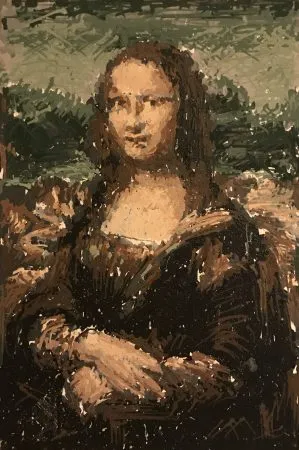Check Out This Year’s Entries to the RobotArt Competition
Thirty-eight teams have submitted almost 200 artworks painted by robots, many guided by artsy artificial intelligence
Artificial intelligence is getting pretty good at producing digital works of art and a recent AI take on artist Bob Ross painting trees is melting peoples’ brains. But when it comes to producing actual analog masterpieces with paint and brushes, artificial intelligence and robots are just getting started. And much of that robo-talent is being nurtured by the RobotArt competition, reports Glenn McDonald at Seeker.
The contest was started last year by Andrew Conru, founder of the early social network FriendFinder, who plans to run the project for at least five years. The competition is open-ended and awards $100,000 in prize money, with $40,000 going to the first place winner. The winners of this year’s competition, which is being judged by a panel of art and tech experts as well as public voting via Facebook, will be announced May 15. Currently there are almost 200 entries from 38 teams.
“I made a lot of money on tech and I thought I wanted to give something back,” Conru tells McDonald. “I thought, what’s the best way to leverage it? What about a competition to encourage creativity in tech people all over the world.”
McDonald reports that some of the paintings are created by robots that are essentially programmed or controlled by human artists. But most of the entries incorporate some sort of artificial intelligence component that collaborates with a human or comes up with original artworks on its own.
One robo-artist, for instance, uses motion sensors to track dancers and interpret their movements as lines and color. Another uses Deep Learning techniques to allow an AI to make different decisions as it paints multiple iterations of an abstract portrait.
So will the rise of the robo-Picassos make starving human artists even more desperate? On his website, Conru writes that
“[R]obots and AI will enable artist to attempt art that are perhaps intellectually or physically more ambition than before. AI advances in human mimicry or extension might also affect the fundamental connection between the artwork and those who interact with it.
While this contest can be though[t of as] a “John Henry” moment where we are investigating the fuzzy, less analytical, comparisons between human and machine, in art, there are no losers. We all win when we see something beautiful.”
While the contest is helping to push robotic art in new directions, robo-art has actually been around a surprisingly long time. Martin Gayford at MIT Technology Review reports that painter Harold Cohen has collaborated with a piece of software called AARON since 1973. And in 2013 a program called “The Painting Fool” that creates original portraits had its own show in a Paris gallery.





